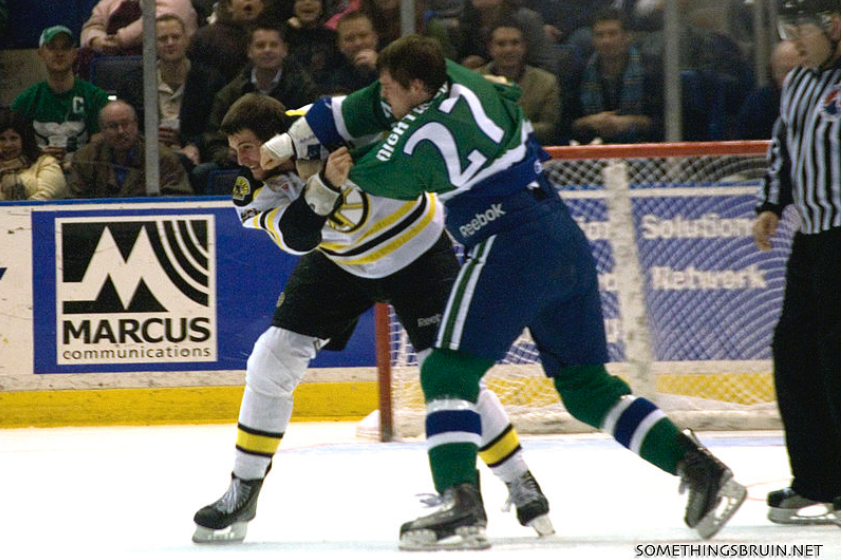
Play rather than fighting is the main threat for head injuries.
In the NHL, CTE (chronic traumatic encephalopathy) and concussions have been serious issues, having a major financial impact on the league, playing careers, and far more importantly, a severe impact on the short- and long-term health of players.
As awareness of hockey concussions and CTE has grown, the NHL has responded in a variety of ways, including innovations in equipment design, new rules of the game, more attentive league oversight and discipline, and much more. The NHL DoPS (Department of Player Safety), created in 2011, is command central for keeping players as safe as possible on the ice and enforcing NHL discipline for player infractions that have safety ramifications.
Background on NHL Concussion and CTE Issues
A 2014 study from The Journal of the Canadian Chiropractic Association provides an excellent summary of hockey concussions and related medical issues. Among the key points relating specifically to the NHL concussion situation:
- The NHL is the highest level of hockey in North America and poses the most serious threat for concussions in the sport.
- At least eight NHL players (including Brett Lindros and Pat LaFontaine) were forced to retire early between 1993 and 2003 as a result of persistent concussion symptoms. It is likely that other, unreported incidents increase the number of affected players.
- By 2001-02, the number of concussions had tripled in the NHL from 1986-87.
- These findings and others led the NHL to establish the NHL/NHLPA Concussion Program in 1997, to monitor injuries and research solutions.
- Experts believe risk of concussion increases as players become bigger, faster and stronger. In the NHL, players have increased weight an average of 10 pounds between 1986 and 2002.
- Forwards account for almost two-thirds of all hockey concussions, with just under one-third suffered by defensemen and less than 5 percent suffered by goalies.
The NHL DoPS
In 2011, the NHL DoPS was established, in the words of NHL Commissioner Gary Bettman, “… for developing rules related to better protecting our players without changing the fundamental nature of our game, dealing with equipment and safety issues related to equipment, and … administer … supplemental discipline.”
George Parros, a forward who played most of his NHL career for the Anaheim Ducks as an enforcer, is the current head of DoPS. The department monitors every NHL game at league headquarters in New York, on state-of-the-art video equipment. The department has the ability to assess NHL discipline whether or not a penalty has been called, and penalties are assessed by DoPS based on what happened, the player’s history, whether the other player was involved, game situation and other factors deemed relevant. Discipline usually takes the form of suspensions and fines, and they can be severe. Players have the right to appeal.
NHL CTE Issues
CTE is a degenerative disease linked to repetitive head trauma, including concussions. It is a condition that has become better understood in recent decades, mainly as a result of the terrible fates of NFL players who suffered horrific physical and psychological symptoms, and in some cases took their own lives.
A tentative agreement has been reached between the league and 300+ retired NHL players who sued the NHL in 2013 for failing to protect them from head injuries. The settlement includes eligibility of up to $75,000 per player for medical treatment, free neuropsychological testing, possible cash payouts of $22,000, and a new Common Good Fund to support retired players involved or not involved with the lawsuit.
While this is certainly welcome news, past and present NHL players are not altogether happy with the settlement, feeling it is insufficient. In contrast, the NFL projects payouts of more than $1.5 billion to 20,000 or more players over the next 65 years, and has already approved more than $500 million. Officially, the NHL has been reluctant to admit a link between repeat concussions and CTE, at least to this point.
(Image Credit – Wikimedia Commons)
